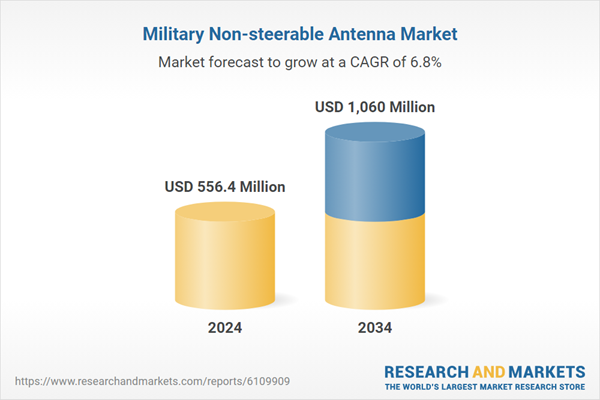As modern warfare emphasizes joint-force coordination and real-time cross-domain communication, these antennas are being mounted on combat vehicles, naval fleets, forward operating bases, and surveillance infrastructure. Global powers such as India, the United States, China, and members of NATO are prioritizing the installation of robust, infrastructure-light systems. With a growing push for hardened battlefield communications, countries are actively investing in systems that provide high availability with reduced logistical complexity, positioning non-steerable antennas as a preferred solution in today’s digital defense architecture.
The electronic warfare segment is expected to grow at a CAGR of 8.6% through 2034, driven by the role non-steerable antennas play in supporting operations such as jamming, signal interception, and passive surveillance. Lightweight fixed antennas are being increasingly integrated into electronic warfare systems to provide situational awareness and enhance spectrum control. These systems are being further miniaturized and adapted for unmanned aerial platforms, enabling flexible tactical deployments with reduced setup time and improved survivability.
The airborne platforms segment is expected to grow at a CAGR of 8.2% between 2025 and 2034. This surge is largely due to the intensifying need for ISR (intelligence, surveillance, and reconnaissance) missions and growing reliance on both manned and unmanned aircraft. Vibration-resistant, compact non-steerable antennas that support high-frequency communication and electronic warfare capabilities are being deployed to meet these new demands. Modern defense initiatives are embedding these antennas in airborne communication suites to ensure secure links across combat zones and strategic areas of operation.
Germany Military Non-steerable Antenna Market accounted for USD 20 million in 2024. The country's focus on strengthening its communication infrastructure through NATO collaboration and internal modernization programs is boosting demand. Germany is investing in secure, multi-frequency systems for mission resilience and strategic autonomy. Prominent defense companies such as HENSOLDT and Rohde & Schwarz are playing a major role in production and system development. Nationwide programs geared toward adopting 5G in military environments and enhancing cyber secure communications are major factors driving this market upward.
Key companies leading the Military Non-steerable Antenna Market include MTI Wireless Edge, Abracon, HR Smith Group of Companies, L3Harris Technologies, Inc., Hascall-Denke, and Rohde & Schwarz. Leading firms in the military non-steerable antenna space are focusing on strategic innovation, global partnerships, and material advancements to strengthen their presence. Many are developing compact, lightweight, and ruggedized antenna designs optimized for multi-platform integration across air, land, and sea systems. These companies invest in R&D to meet evolving frequency demands, electromagnetic resilience, and interoperability standards. Collaborations with defense ministries and OEMs allow tailored system deployment in mission-critical programs. Businesses are also localizing production to comply with defense procurement policies and enhance delivery timelines.
Comprehensive Market Analysis and Forecast
- Industry trends, key growth drivers, challenges, future opportunities, and regulatory landscape
- Competitive landscape with Porter’s Five Forces and PESTEL analysis
- Market size, segmentation, and regional forecasts
- In-depth company profiles, business strategies, financial insights, and SWOT analysis
This product will be delivered within 2-4 business days.
Table of Contents
Companies Mentioned
- Abeillon
- Abracon
- Antcom
- CBG Systems
- Chelton Limited
- Comrod Communication AS
- Fei Teng Wireless Technology
- Hascall-Denke
- HR Smith Group of Companies
- KNL
- L3Harris Technologies, Inc.
- MTI Wireless Edge
- RAMI
- Rohde & Schwarz
- Rojone Pty Ltd
- Thales
Table Information
| Report Attribute | Details |
|---|---|
| No. of Pages | 185 |
| Published | June 2025 |
| Forecast Period | 2024 - 2034 |
| Estimated Market Value ( USD | $ 556.4 Million |
| Forecasted Market Value ( USD | $ 1060 Million |
| Compound Annual Growth Rate | 6.8% |
| Regions Covered | Global |
| No. of Companies Mentioned | 16 |









